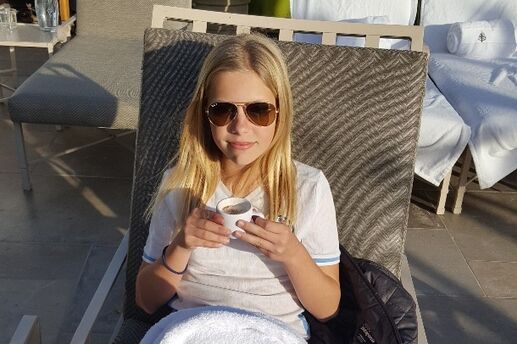Gorgeous Hair Color All Summer Long

Along with bronzed cheeks and peachy lips, gleaming hair is key to summer’s easy, breezy beauty look. But between UV exposure and swimming in chlorine pools or saltwater surfs, hair can take a beating. And that’s especially true if it’s color-processed.
So we asked two pros to answer your most pressing summer hair color questions so you can maintain a gorgeous hue from June to August. Frank Dino is the co-owner of TINT, a color-only salon in Santa Monica, Calif., and Dr. Jessica Krant is a dermatologist and founder of Art of Dermatology in New York City. Here’s what they said.
Should I take my hair color a shade lighter in the summer?
If you’re going to be sporting a tan (make it a faux one to protect your skin!), you might want to adjust your color to provide contrast. Think of how your hair would bleach naturally if you didn’t protect it from UV rays, and go for that shade.
Should I save highlights for winter?
If highlights give your hair a dimension you enjoy in the winter, you’ll want to carry this through to summer, too. A few lighter pieces framing the face are all you need for a natural surfer-chic look. If you’re a blonde, opt for champagne streaks. If you’re a light or medium brunette, have your colorist add some ribbons of dirty blonde. Darker hair will look sun-kissed stunning with light brown and caramel highlights. And for hair that sparkles under the summer sun, think about adding a glossing treatment the next time you visit your salon for a cut or color.
I know the sun can damage my skin. Can it harm my hair color as well?
Hair definitely gets damaged by the ultraviolet rays of the sun. Those UV rays scorch the hair shaft, drying it out and causing the normally smooth cuticle, or outer layer, of our strands to get rough. What’s more, UV rays break down hair’s pigments, fading color or turning it brassy. New research shows that UV rays cause hair to lose protein too. The result of all this is hair that’s lacking shine, strength and vibrant color.
How does chlorine or saltwater damage hair?
Chlorine, which is a component of bleach, dries out strands by its caustic chemical nature, stripping away your hair’s natural protective oils. (Blonde hair turning green in the swimming pool, by the way, isn’t actually caused by chlorine but by copper molecules from other pool chemicals.) Seawater stresses hair and skin in another way. The heavy salt content draws water molecules out of hair in an attempt to try to dilute the salt. The result: dehydrated hair shafts.
What’s the best way to protect my hair during and after a day spent poolside or surfside?
Doff a hat! A hat will not only protect your tresses, it will also shield the scalp skin that gets exposed when hair is wet from sunburn and lower your risk of skin cancer. Before you go for a dip, try to saturate your hair with clean water or leave-in conditioner. That way it won’t absorb as much saltwater or pool chemicals. To replenish your parched strands, it’s a good idea to switch to a moisturizing shampoo and conditioner. Just make sure the products you choose are recommended for color-treated hair. You can usually find this information on the back of the bottle.


